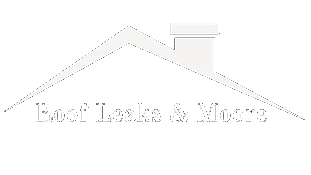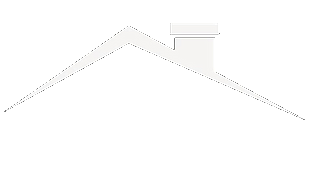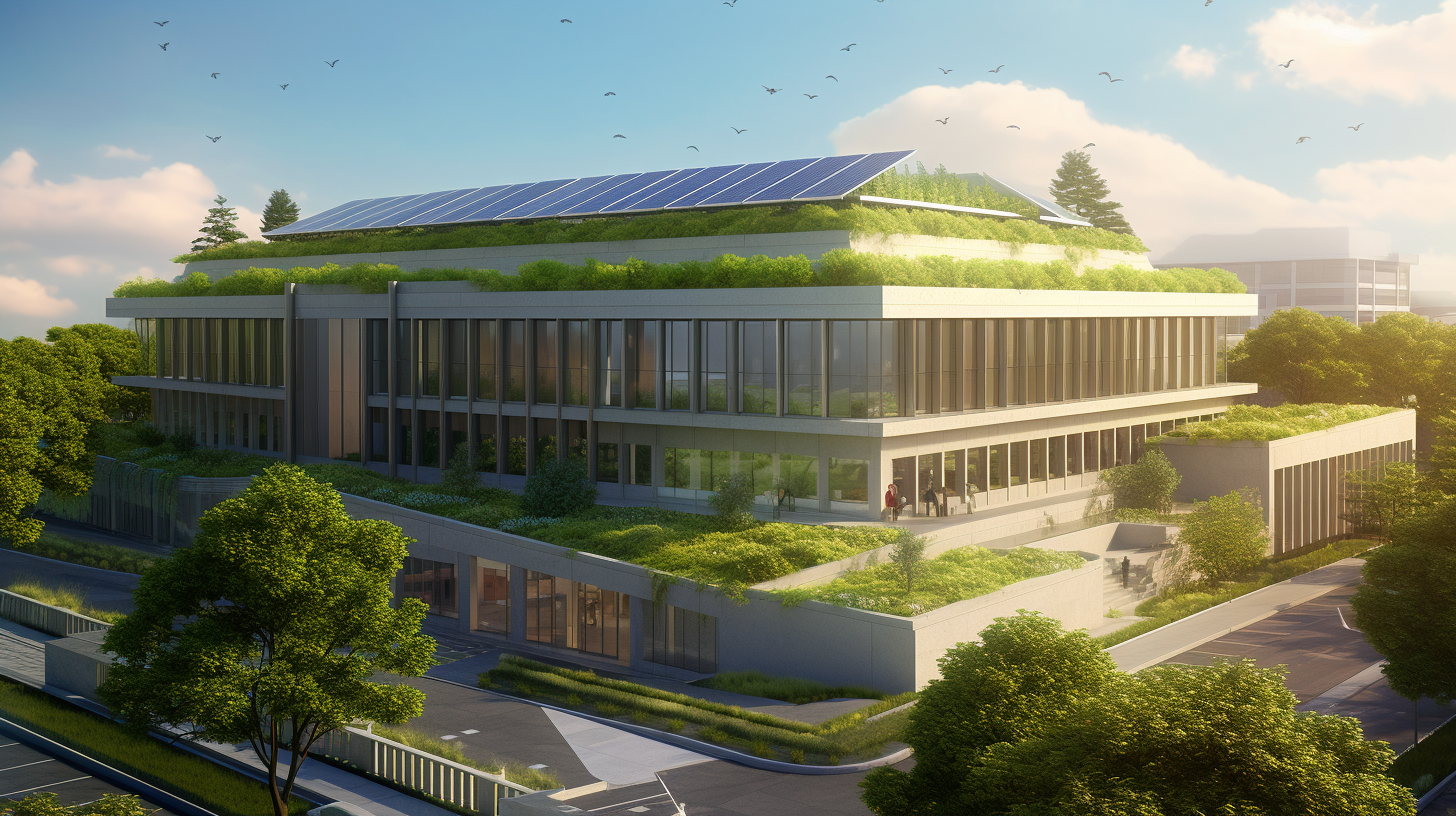When it comes to government buildings, sustainability should be a top priority. As a responsible citizen, you need to be aware of the environmental impact that these buildings have on the planet. One of the most crucial aspects of sustainable building design is the roofing system. The right roofing system can significantly reduce energy consumption, minimize the carbon footprint, and improve the indoor environment’s quality.
This article explores sustainable roofing options for government buildings, providing you with environmentally friendly solutions that can make a difference. As you delve into this article, you will discover that sustainable roofing options go beyond traditional asphalt shingles. You will learn about green roofs, solar panels, cool roofs, and other innovative options that can help your government building achieve energy efficiency and environmental responsibility.
By exploring these options, you can make informed decisions that not only benefit the environment but also save you money in the long run. So, let’s dive into the world of sustainable roofing and discover how you can make your government building a model of environmental sustainability.
The Importance of Sustainable Roofing for Government Buildings
You should consider sustainable roofing options for your government buildings because they can significantly reduce energy consumption and costs. Cost-effective solutions, such as cool roofs, green roofs, and solar panels, can help mitigate the urban heat island effect and reduce the amount of heat absorbed by the building, leading to lower energy usage for cooling.
Additionally, a sustainable roof can provide long-term benefits, such as improving air quality, reducing stormwater runoff, and increasing the lifespan of the roof.
One of the most effective sustainable roofing options for government buildings is green roofs. Green roofs are roofs that are covered in vegetation and soil, providing insulation and reducing the amount of heat absorbed by the building. As mentioned earlier, the city of Portland saved over $1.5 million in energy costs over 20 years by installing green roofs on their government buildings.
Not only do green roofs provide cost savings, but they also create a more aesthetically pleasing environment and can even increase property value.
Green Roofs
When it comes to sustainable roofing options for government buildings, green roofs are a popular choice.
Green roofs offer many benefits, such as reducing energy costs, improving air quality, and mitigating the urban heat island effect.
Many government buildings have already implemented green roofs, such as the U.S. Environmental Protection Agency headquarters in Washington, D.C. and the Chicago City Hall.
Benefits of Green Roofs
If you’re looking for a way to reduce energy costs and improve air quality, consider installing a green roof. Green roofs are a cost-effective solution for sustainable roofing, as they can reduce energy costs by providing insulation and shade, and also improve air quality by absorbing carbon dioxide and pollutants. Additionally, green roofs can serve as urban agriculture spaces, providing a source of fresh produce in densely populated areas.
Studies have shown that green roofs can reduce a building’s energy costs by up to 30%, making them a smart investment for government buildings. They also have the potential to reduce the heat island effect in urban areas, where temperatures can be several degrees higher than in surrounding rural areas.
Furthermore, green roofs can provide space for urban agriculture, which can contribute to local food security and provide educational opportunities for communities. With all of these benefits, it’s no wonder that more and more government buildings are incorporating green roofs into their sustainable roofing solutions.
Transitioning into the subsequent section, it’s important to note that there are already many examples of government buildings with green roofs, from the United States Capitol Building to the Vancouver Convention Centre. Let’s take a closer look at some of these examples and see how they are contributing to sustainable roofing practices.
Examples of Government Buildings with Green Roofs
From the United States Capitol Building to the Vancouver Convention Centre, government buildings have already implemented green roofs as a sustainable and cost-effective solution for improving energy efficiency and air quality.
Some examples of government buildings with green roofs include:
- The City Hall in Portland, Oregon, which features a 17,000 square foot living roof that reduces stormwater runoff and provides insulation for the building.
- The California Academy of Sciences in San Francisco, California, which has a 2.5-acre living roof that includes seven hills with different native plant species, reducing the building’s energy consumption by 30%.
- The Federal Center South Building 1202 in Seattle, Washington, which has a green roof that covers 100% of the building’s roof and is designed to retain 100% of stormwater on-site.
- The Chicago City Hall in Chicago, Illinois, which has a green roof that includes more than 20,000 plants and reduces the building’s energy consumption by 10%.
Green roofs offer numerous benefits for government buildings, including reducing stormwater runoff, improving air quality, and reducing energy consumption.
The installation process for green roofs typically involves adding a layer of waterproofing to the roof, followed by a layer of soil and plants. While the initial cost of installation may be higher than traditional roofing methods, the long-term benefits and cost savings make green roofs a worthwhile investment for government buildings.
As we move into the next section about solar panels, it’s important to note that green roofs and solar panels can often complement each other in terms of sustainability and energy efficiency.
Solar Panels
You can’t go wrong with solar panels for your sustainable roofing needs. Not only are they environmentally friendly, but they are also cost effective in the long run. Solar panel efficiency has greatly improved over the years, making them a viable option for powering government buildings.
To give you an idea of just how efficient solar panels can be, take a look at the following table:
| Solar Panel Type | Efficiency |
|---|---|
| Monocrystalline | 15-20% |
| Polycrystalline | 13-16% |
| Thin Film | 7-13% |
As you can see, there are different types of solar panels available, each with varying levels of efficiency. The most efficient option is monocrystalline, but it is also the most expensive. Polycrystalline panels are a more cost-effective alternative, and thin film panels are the least expensive but also the least efficient.
As we move on to the next section about cool roofs, keep in mind that solar panels are just one option for sustainable roofing.
Cool Roofs
If you’re interested in exploring sustainable roofing options for government buildings, one option that’s gaining popularity is cool roofs.
These roofs are designed to reflect more sunlight and absorb less heat than traditional roofs. This can significantly reduce energy consumption and costs.
You can find cool roofs on a variety of government buildings across the country. This includes federal offices, schools, and municipal buildings.
Benefits of Cool Roofs
Cool roofs are absolutely amazing because they can significantly reduce the need for air conditioning in government buildings. This is because cool roofs are designed to reflect sunlight and absorb less heat than traditional roofs. By doing so, cool roofs can help reduce the urban heat island effect in densely populated areas, which is a phenomenon that causes urban areas to be significantly warmer than surrounding rural areas.
Additionally, cool roofs can improve energy efficiency by reducing the amount of heat that enters a building, which in turn lowers the demand for air conditioning. Aside from their energy-saving benefits, cool roofs can also prolong the lifespan of a building’s roof. This is because cool roofs experience less thermal expansion and contraction than traditional roofs, which can lead to cracks and leaks over time.
Moreover, cool roofs can help reduce the amount of greenhouse gas emissions that are released into the atmosphere. By reducing the demand for air conditioning, cool roofs can help lower the amount of carbon dioxide that’s produced by power plants. With all these benefits, it’s no wonder why cool roofs are becoming increasingly popular. Speaking of which, let’s take a look at some examples of government buildings with cool roofs.
Examples of Government Buildings with Cool Roofs
If you’re wondering what the benefits of cool roofs are, you’re not alone. Many people are unaware of the advantages of this eco-friendly roofing solution. In the previous subtopic, we discussed how cool roofs can reduce energy consumption, improve indoor comfort, and mitigate the urban heat island effect. Now, let’s take a closer look at some examples of government buildings that have implemented cool roofs.
One such example is the Los Angeles Convention Center. The facility installed a cool roof in 2015, which helped reduce the building’s energy usage by 10 percent. Additionally, the cool roof was designed to reflect more sunlight than traditional roofing materials, which reduced the amount of heat absorbed by the building. Another example is the San Francisco International Airport’s Terminal 2. The airport installed a cool roof in 2011, which reduced the building’s energy consumption by 10 to 15 percent. The cool roof also helped improve indoor comfort for passengers and employees by reducing the temperature inside the building. While these examples demonstrate the advantages of cool roofs, implementing this solution in government buildings can pose some challenges. Cost and maintenance are two important considerations that need to be addressed.
Other Sustainable Roofing Options
Let’s take a look at some other sustainable roofing options that can help us reduce our carbon footprint and contribute to a healthier environment.
One option is to use recycled materials for the roofing materials. This can include products made from recycled plastic, rubber, and even old tires. By using recycled materials, we can reduce waste and energy consumption in the manufacturing process while also creating a durable and long-lasting roofing solution.
Another sustainable roofing option is to focus on energy efficiency. This can include the use of solar panels or green roofs, which can absorb heat and reduce the amount of energy needed to cool the building. Additionally, cool roofs, which reflect sunlight and absorb less heat than traditional roofs, can also contribute to energy efficiency.
By incorporating these sustainable roofing options into government buildings, we can not only reduce our carbon footprint but also save money on energy costs in the long run.



